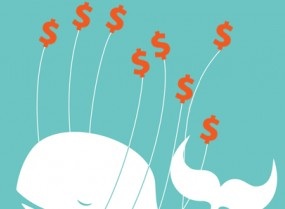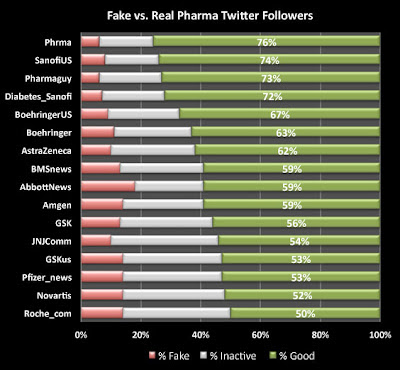Who Owns Your Social Media? Health Is Social, But Privately Owned and Operated
By John Mack
 “Twitter just announced a complex, confusing, and developer-alienating system that restricts their once-open, always cherished but now apparently taken for granted API,” complained Michael Spitz, SVP and Managing Director at Zemoga. “The new rules change the playing field for third party developers, establish caps on number of users, and shift guidelines to requirements across four categories of businesses that Danny Sullivan of Search Engine Land humorously characterized in Star Trek terms.” Spitz characterized this as #TWITTERFAIL and he thinks the new rules “ruin the spirit of social media” and are “bad for healthcare”:
“Twitter just announced a complex, confusing, and developer-alienating system that restricts their once-open, always cherished but now apparently taken for granted API,” complained Michael Spitz, SVP and Managing Director at Zemoga. “The new rules change the playing field for third party developers, establish caps on number of users, and shift guidelines to requirements across four categories of businesses that Danny Sullivan of Search Engine Land humorously characterized in Star Trek terms.” Spitz characterized this as #TWITTERFAIL and he thinks the new rules “ruin the spirit of social media” and are “bad for healthcare”:
Central to the success and fondness for Twitter has been its “open API” structure, enabling an application programming interface that allows developers to freely access and repurpose in any way they see fit all the streaming and archived data within the Twitterverse. The relationship has been reciprocal; in exchange for that unhindered access Twitter got some of the best programming know-how and third-party apps out there.
That symbiosis between Twitter, developers, and end-users has characterized one of the most successful communication experiments in human history. For the first time and on an unprecedented scale users themselves have created a digital channel’s structure, syntax, and extensibility. Even conventions such as @reply and #hashtag originated with outsiders through this delightfully self-referential social media dance.
Twitter just announced a complex, confusing, and developer-alienating system that restricts their once-open, always cherished but now apparently taken for granted API. The new rules change the playing field for third party developers, establish caps on number of users, and shift guidelines to requirements across four categories of businesses that Danny Sullivan of Search Engine Land humorously characterized in Star Trek terms.
Irrespective of the details, the result is alienation of the developer community that helped build, grow, and support Twitter. As astute bloggers have already observed, these new API restrictions will curtail growth of these third-party apps, and discourage new developers and businesses from entering the space. What was once a dynamic, innovative, and diverse Twitter ecosystem will now be increasingly and likely entirely controlled by the Mothership.
Read entire post here: “#TWITTERFAIL: HOW NEW RULES RUIN THE SPIRIT OF SOCIAL MEDIA AND ARE BAD FOR HEALTHCARE“.
Spitz’s “rant” raises a couple of interesting issues that I discussed with him in a live Pharma Marketing Talk podcast (listen to the podcast archive below).
First, the premise that changes to Twitter’s API can be “bad” for healthcare is based upon the notion that Twitter has been or could be “good” for healthcare. I’m not sure what Spitz includes in his “healthcare” category. Since he works for an agency with pharmaceutical company clients, I am sure he includes the drug industry as part of what he means by healthcare. Part of of the discussion focuses on how Twitter can be good (or bad) for the pharma industry’s goals of selling more drugs.
I have written several articles about how pharma can use Twitter to help support patients (see “Supporting Patients via Twitter and Beyond” and “Use of Twitter for Patient Support“) and criticized pharma for using Twitter (and blogs) to promote their products (ie, “market”; see “Novo Nordisk’s Branded (Levemir) Tweet is Sleazy Twitter Spam!” and “AstraZeneca’s Timely CRESTOR Branded Blog Post: Did It Violate Its Own Policy?“). My view is that Twitter has been good for pharma mainly in the public relations realm, which may or may not translate into increased drug sales.
Most tweets from pharmaceutical companies are about what they are doing in this therapeutic area or that therapeutic area (e.g., support for COPD, atrial fibrillation, diabetes innovation, etc.). Pharma tweets a lot about clinical study results (mostly the positive results) and news from medical conferences where they are exhibiting (“come to our booth”). They also tweet about investor presentations and other news about their company that Wall Street finds of interest.
None of those tweets do healthcare any good — e.g., improve outcomes of drug treatment. They do, however, provide benefit to pharma companies by getting them more attention by the media, which dutifully followup with articles based on these pharma “Tweet Releases.”
Another issue related to the lament about the more and more restrictive Twitter API is the question “Who Owns your Social media?”, which was brought to my attention by Phil Baumann of “Health is Social.” Baumann is also a member of the Advisory Board at Mayo Clinic Center for Social Media, so he has a healthcare perspective beyond pharma.
Listen here to the podcast interview or use the playback widget below).
Listen to internet radio with Pharmaguy on Blog Talk Radio
I invited Baumann to be a guest on the podcast, but he was not available. He did, however, send me some thoughts, one of which is:
“Too much emphasis has been placed on social media in general – at the expense of focusing on the only thing Healthcare or Pharma can own on the web: their own domains. Social Media should not be seen as the center of a web presence – ever. It’s a tempting thought, but the reality is the other way around. Healthcare and Pharma organizations should learn [from] these API changes that they don’t own anything on these social media sites. Many experts have laughed off blogging and traditional websites, but I still maintain that if you can’t build your own solid presence on your own domain, you won’t do well on social media in the long-run.”
You should also read “The Over-promising of Healthcare Social Media” written by Baumann.
Here are a few other thoughts from Baumann on the Twitter API issue:
- The first thing that Healthcare and Pharma need to realize is that social software is pliant and tenuous. With social software, the tiniest tweaks can produce huge ramifications throughout a digital ecosystem.
- If the industries are going to be involved in social media, they need people on staff who can keep up with the technical changes that happen – in fact, they need to anticipate them and have plans to turn to when those changes take place.
- The average person probably only cares about Twitter clients – I suspect that Twitter will eventually whittle clients down to a very few. It already owns TweetDeck, but hasn’t developed this asset much.
- The larger Healthcare/Pharma Enterprise impacts of the API changes are likely to be more in the area of data-mining, monitoring, metrics, etc. For example, Twitter might rate-limit calls for certain kinds of data – let’s say a Pharma company or its vendor monitors for mentions of a drug and or keywords related to possible Adverse Events. Depending on the API changes over time, there may be limits to the amount of data that can be captured in a timely manner.
- None of what Twitter is doing with its API is at all unexpected – at least it shouldn’t be. Ultimately, this is Twitter’s product – albeit one that increasingly is becoming a virtual public utility.
Another Pharma Twitter Issue Fake vs. Real Pharma Twitter Followers
Piotr Wrzosinski (@pwrzosin), IPM Digital Marketing at Roche and a member of my Pharma Twitter Pioneer Group (see here), recently posted this to Twitter today:
“0% of my followers are fake. How many fake followers do you have..? http://sttsp.pl/ahaf @StatusPeople #FollowerSpam”
Goodie! Another social media metric I can use to compare pharma Twitter accounts. I quickly followed the link to StatusPeople Web site where I was invited to “Find out how many fake followers your friends have.”
Before looking at my “friends” data, however, I looked at my own and found out that 73% of my nearly 12,000 Twitter followers were neither “fake” (“spam” accounts that “tend to have few or no followers and few or no tweets, but [which] tend to follow a lot of other accounts.”) nor “inactive.” This was quite better than most pharma Twitter accounts as can be seen in the following chart (click for an enlarged view):

I do not have 0% fakes like Piotr; six percent (6%) of my followers may be fakes. This is the lowest percentage among the 16 pharma Twitter accounts I measured. @Abbottnews had the highest percent of “fake” followers: 18%. Fouteen percent (14%) of followers of Roche, Novartis, Pfizer GSK(U.S.) are “fakes” or suspected spam accounts.
Why is it important to know how many fake and inactive followers a Twitter account has?
“There are two reasons,” says StatusPeople. “First it’s important for you to be sure when you communicate on Twitter that you are communicating with real and active followers. Because the more active your follower base the more likely they are to share your content.
The second reason is there are a growing number of Fakers out there. People who buy followers in a vain attempt to build legitimacy. “‘Look at me I have 20,000 followers, I must know my…’ They are essentially trying to game the system and it’s important for you to be able to spot them, and steer clear of them. Because ultimately if you’re willing to lie about how many friends you have you are not a very trustworthy individual.”
Well, Pfizer has over 31,000 followers. Way back in 2010, I asked “How Did Pfizer Get So Many Twitter Followers?” (see here). I suggested that Pfizer sent out a memo to all their more than 100,000 employees worldwide telling them to follow @pfizer_news. I was kidding, of course. But I suspected something was up because Pfizer_news somehow attracted about 3-4,000 NEW Twitter followers in just a few days (see chart below)!
 Source: pharmamkting.blogspot.com via Pharma on Pinterest
Source: pharmamkting.blogspot.com via Pharma on Pinterest
Did Pfizer “attempt to build legitimacy” by “gaming the system?”
One caveat: StatusPeople contends that its tool provides “very accurate insight into how many inactive and fake” followers a Twitter account has, but ONLY if there are fewer than 10,000 followers. “If you’re very ‘popular’ the tool will still provide good insight but may better reflect your current follower activity rather than your whole follower base.”
Only 6 out of my sample of 16 pharma Twitter accounts have fewer than 10,000 followers (Phrma, SanofiUS, Diabetes_Sanofi, BoehringerUS, BMSnews, and Abbottnews).
If you want to learn how many fake followers you have, go here.
PMN118-04
Issue: Vol. 11, No. 8: September 2012



![6 Digital Tools at the Center of Healthcare Digitalization [INFOGRAPHIC]](http://ec2-54-175-84-28.compute-1.amazonaws.com/pharma-mkting.com/wp-content/uploads/2021/04/6DigitalTools_600px-218x150.jpg)




![6 Digital Tools at the Center of Healthcare Digitalization [INFOGRAPHIC]](http://ec2-54-175-84-28.compute-1.amazonaws.com/pharma-mkting.com/wp-content/uploads/2021/04/6DigitalTools_600px-100x70.jpg)




